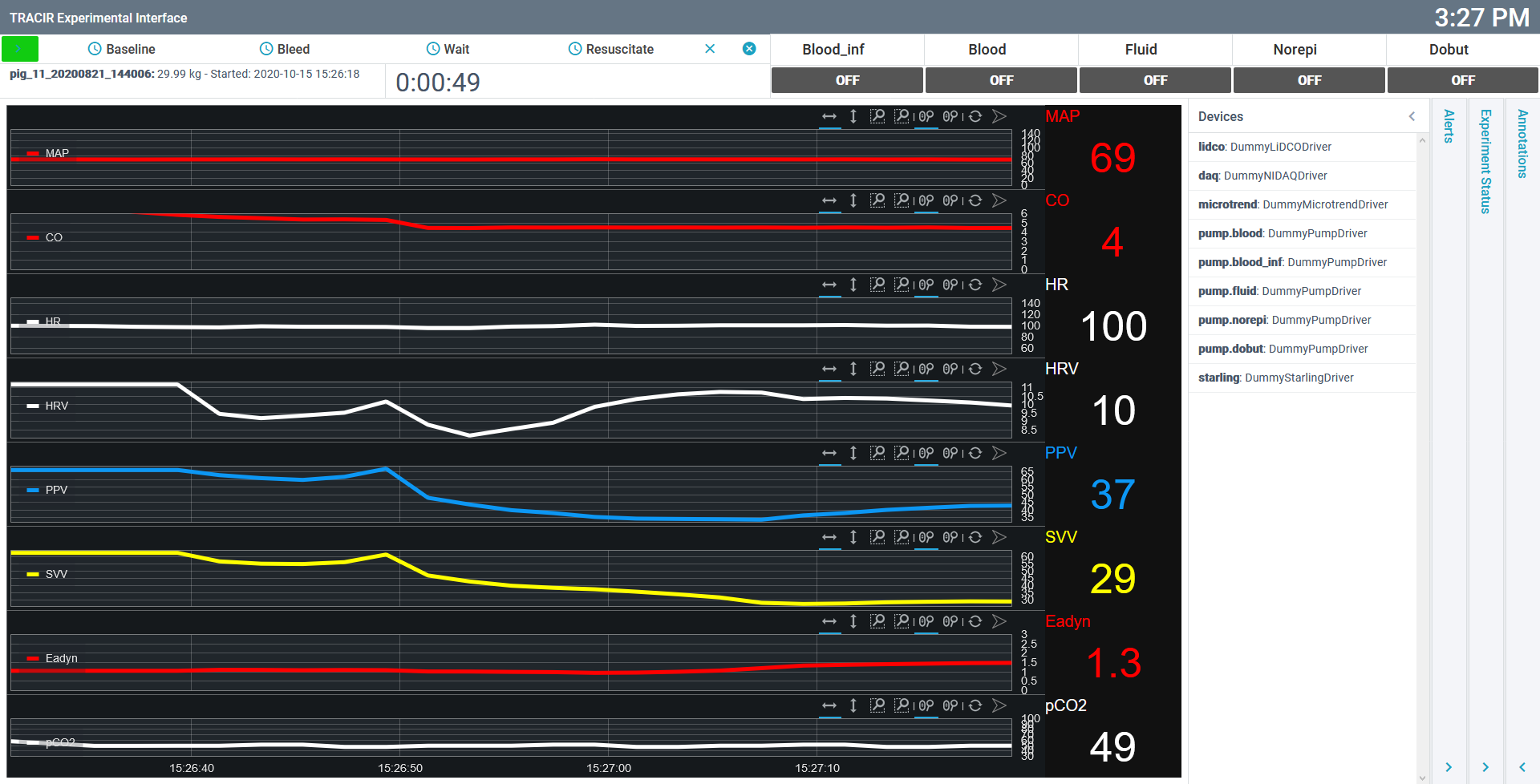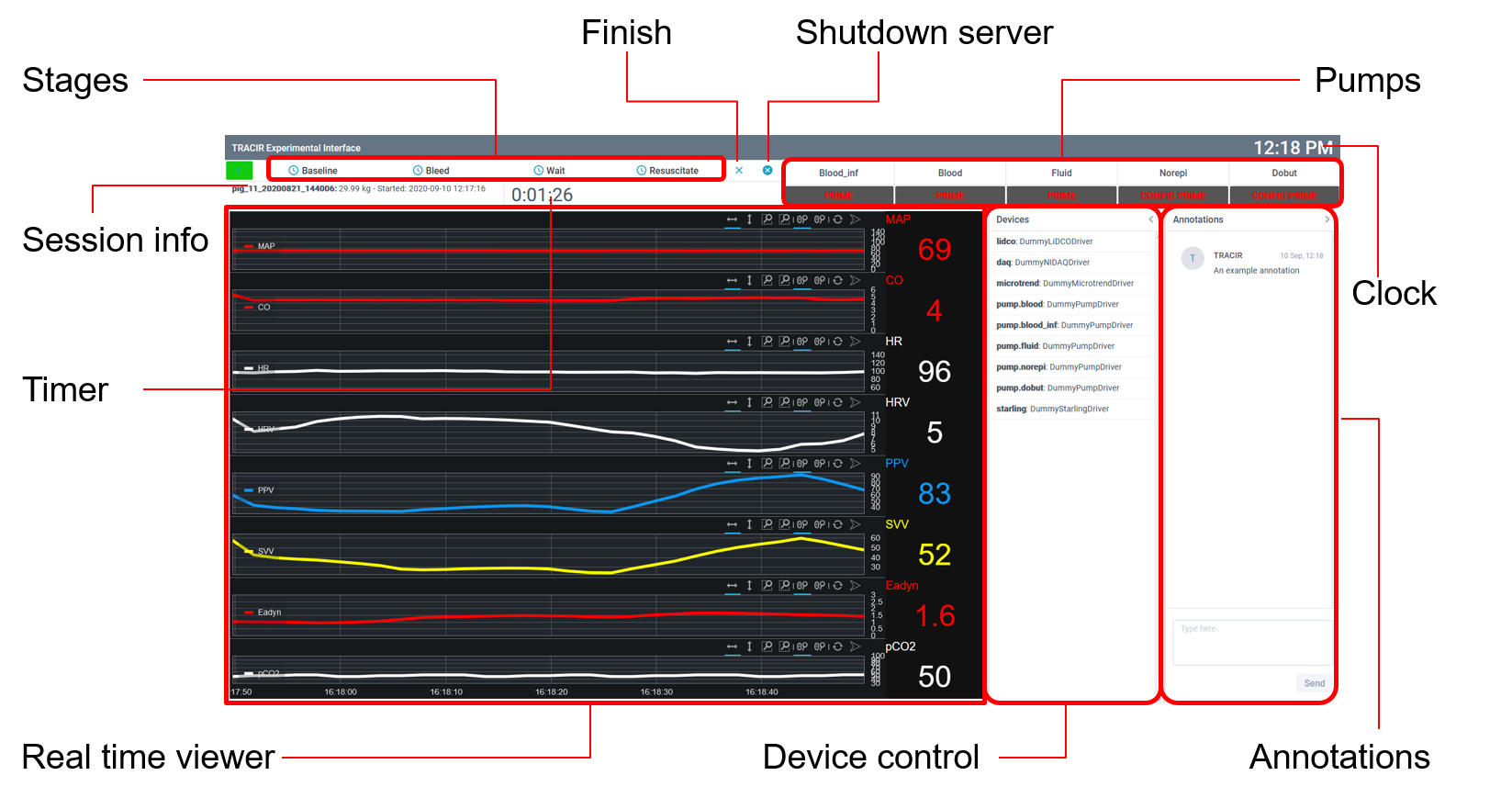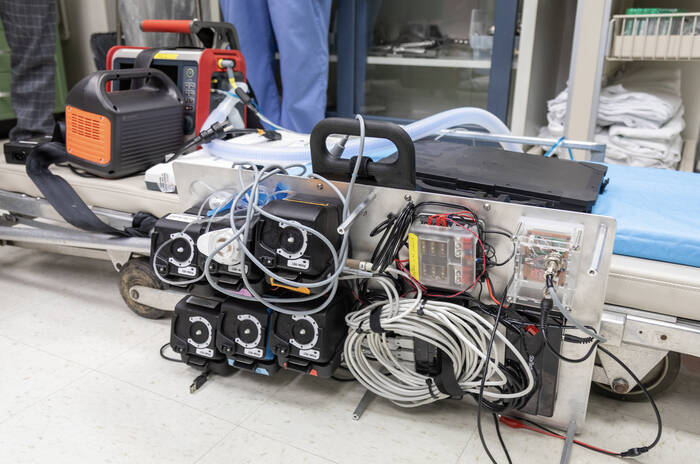Trauma Care in a Rucksack (TRACIR)
Reasearch in robotics is profoundly changing what can be accomplished in medicine. This is especially true in the field, where patients may have limited or no direct access to the state-of-the art facilities and highly trained clinical staff you would find in a hospital or clinic. The Trauma Care in a Rucksack (TRACIR) project aims to fundamentally change this.
](/assets/projects/tracir_deployed.webp)
Figure 2: Successful field deployment and validation. Read more here.
Before leaving the Auton Lab, I had the great priviledge of playing a fundamental role in the development of an automated platform for the validation of closed-loop physiologic monitoring and resuscitation (Pinsky et al., 2024). With an excellent team in the Auton Lab, I lead the development of the first iteration of a real-time data visualization, logging, and automation control platform (seen in figure 1), along with the integration of all of the critical hardware components into an automation platform. The framework we developed was modular, customizable, and robust. Recently, the technology was successfully deployed and validated (figure 2). You can read more about that in the press release or in the scientific publication (Pinsky et al., 2024). We integrated peristaltic pumps for fluid, blood, and medication infusion; biomedical monitors for capture of waveform and beat-to-beat biometrics; and control for automatic ventilation, among other things. The most recent iteration can be see in figure 3 in the gallery.
From here our work will transition out of the lab, into the commercial space for furthur testing and development. This research has the potential to greatly improve the likelihood of survival of patients far from specialized care, as in rural regions or humanitarian crises.
- Pinsky, M., Gomez, H., Leonard, J., Wertz, A., Dubrawski, A., & Poropatich, R. (2024). Evaluation of a physiological driven closed loop resuscitation algorithm. Critical Care Medicine (in-Press).
- Pinsky, M. R., Gomez, H., Guyette, F. X., Weiss, L., Dubrawski, A., Leonard, J., MacLachlan, R., Gordon, L., Lagattuta, T., Salcido, D., & others. (2024). Autonomous precision resuscitation during ground and air transport of an animal hemorrhagic shock model. Intensive Care Medicine Experimental, 12(1), 44.


